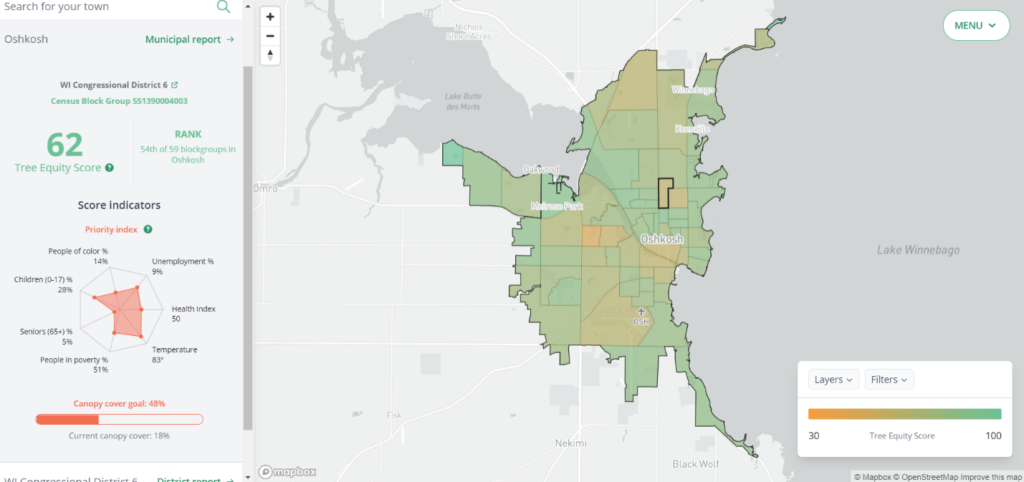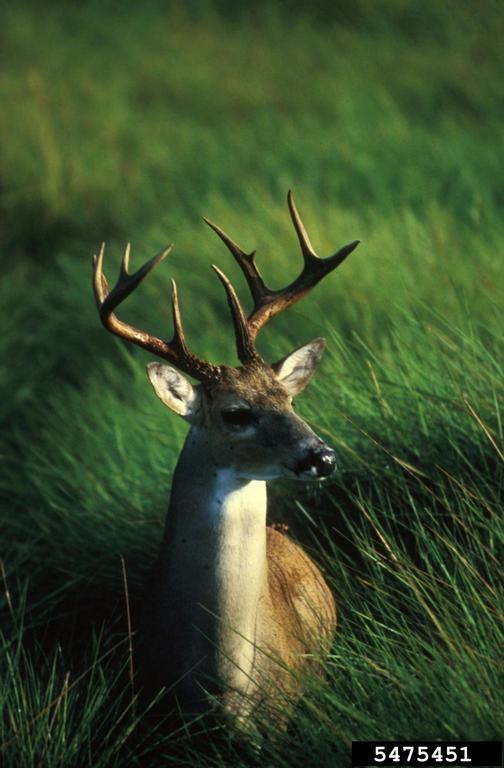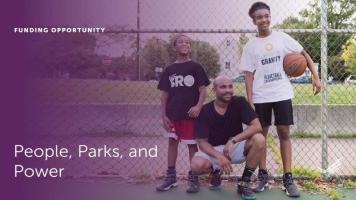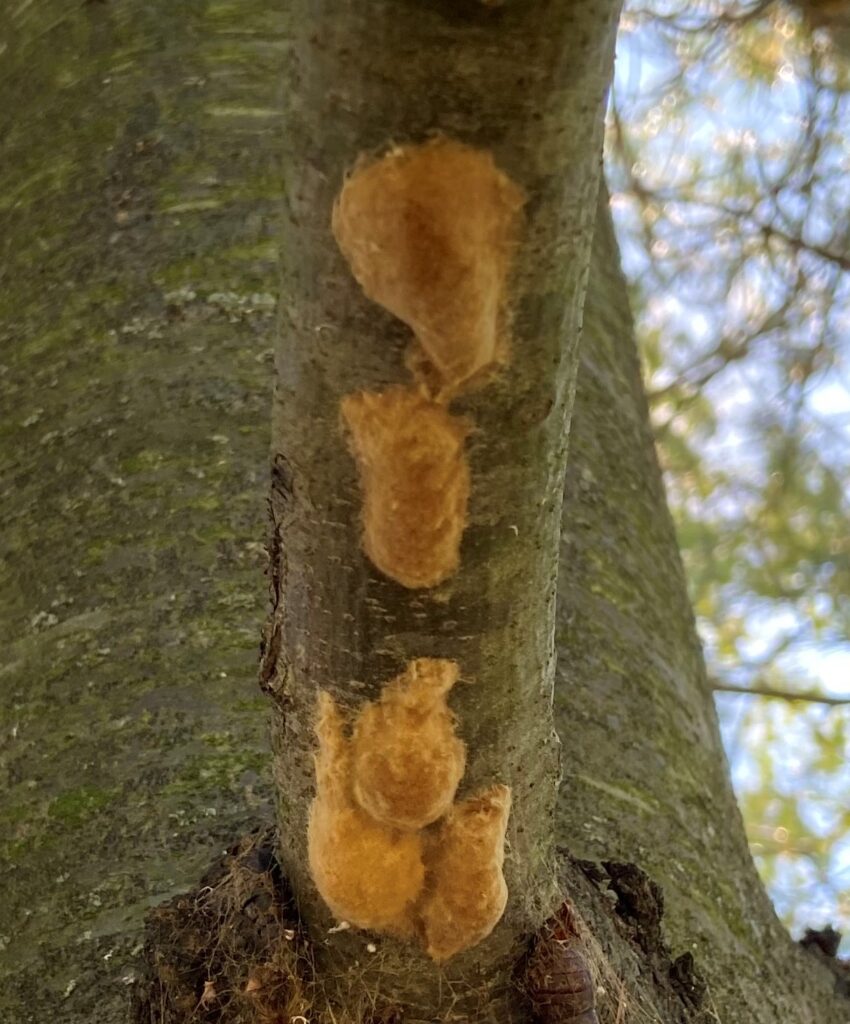By Dan Buckler, DNR Urban Forest Assessment Specialist, Madison, daniel.buckler@wisconsin.gov or 608-445-4578
One needs only to look outside their window or at an aerial image to see that trees are not distributed evenly in their community. Of course, this is often expected and not indicative of any significant problem. One would expect, for example, for many parks to have more trees than densely developed parts of town.
However, sometimes uneven canopy distribution reveals something more harmful – that some neighborhoods and communities, often more wealthy ones, enjoy more canopy cover and thus more of the benefits trees provide. To help identify and mitigate this issue, American Forests recently released Tree Equity Score.

Figure 1 – an example of Tree Equity Score used in Oshkosh, WI. See the score along with demographic and environmental information on the left column.

 The Urban Wood Network (UWN) will host its second annual
The Urban Wood Network (UWN) will host its second annual  Driftless Area Land Conservancy will host Safety and Woods Worker (SAWW)-certified chainsaw safety and efficiency training near Muscoda, Wisconsin. Luke Saunders of Adaptive Restoration LLC will be the trainer.
Driftless Area Land Conservancy will host Safety and Woods Worker (SAWW)-certified chainsaw safety and efficiency training near Muscoda, Wisconsin. Luke Saunders of Adaptive Restoration LLC will be the trainer.
 A new national initiative will provide $7 million in funding for community-based organizations to work on park equity and racial justice.
A new national initiative will provide $7 million in funding for community-based organizations to work on park equity and racial justice.